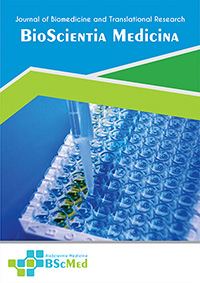Main Article Content
Abstract
Background: Early detection of diabetic nephropathy (DN) is crucial to prevent progression to end-stage renal disease. The gold standard for diagnosing DN involves urine microalbumin testing and renal biopsy. However, the availability of these diagnostic tools is limited in many healthcare facilities across Indonesia. Consequently, there is a pressing need for an alternative examination that is readily accessible and can effectively monitor the progression of DN.
Methods: This cross-sectional study was conducted at Dr. Mohammad Hoesin General Hospital, Palembang, from February 2024 to May 2024. The study aimed to investigate the correlation between neutrophil-lymphocyte ratio (NLR) and urinary albumin levels in type 2 diabetes mellitus (DM) patients. NLR, calculated from complete blood counts, has emerged as a potential inflammatory marker for various conditions. A total of 65 participants diagnosed with type 2 DM were enrolled in the study. Data analysis involved Spearman's correlation test to assess the relationship between NLR and urinary albumin levels.
Results: The majority of the 65 subjects were female (58.5%). The study found that 44 subjects had normoalbuminuria, 18 had microalbuminuria, and 3 had macroalbuminuria. A significant positive correlation was observed between NLR and albuminuria levels in type 2 DM patients (r = 0.795; p < 0.01).
Conclusion: The study's findings suggest that NLR is a potential cost-effective biomarker for the early detection of DN in type 2 DM patients, especially in resource-limited settings. Further large-scale studies are recommended to validate these findings and establish specific NLR thresholds for predicting DN progression.
Keywords
Article Details
As our aim is to disseminate original research article, hence the publishing right is a necessary one. The publishing right is needed in order to reach the agreement between the author and publisher. As the journal is fully open access, the authors will sign an exclusive license agreement.
The authors have the right to:
- Share their article in the same ways permitted to third parties under the relevant user license.
- Retain copyright, patent, trademark and other intellectual property rights including research data.
- Proper attribution and credit for the published work.
For the open access article, the publisher is granted to the following right.
- The non-exclusive right to publish the article and grant right to others.
- For the published article, the publisher applied for the Creative Commons Attribution-NonCommercial-ShareAlike 4.0 International License.





